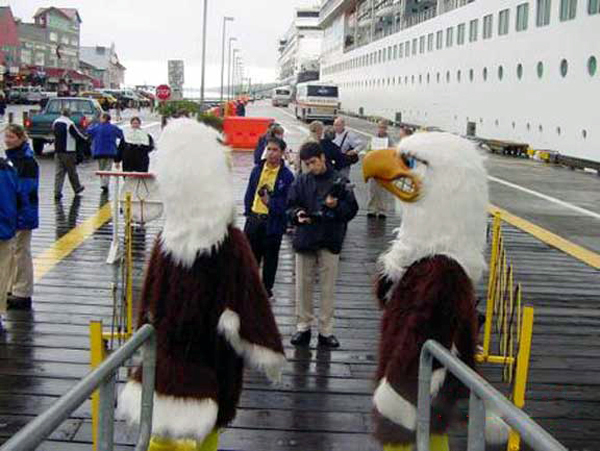 The
LIFE of Lee and Karen Duquette The
LIFE of Lee and Karen Duquette before becoming the Two RV Gypsies 
|
|
|
Totem poles
and The Clanhouse at Totem Bight State Park in Ketchikan, Alaska May 25, 2004 |
|
 |
|
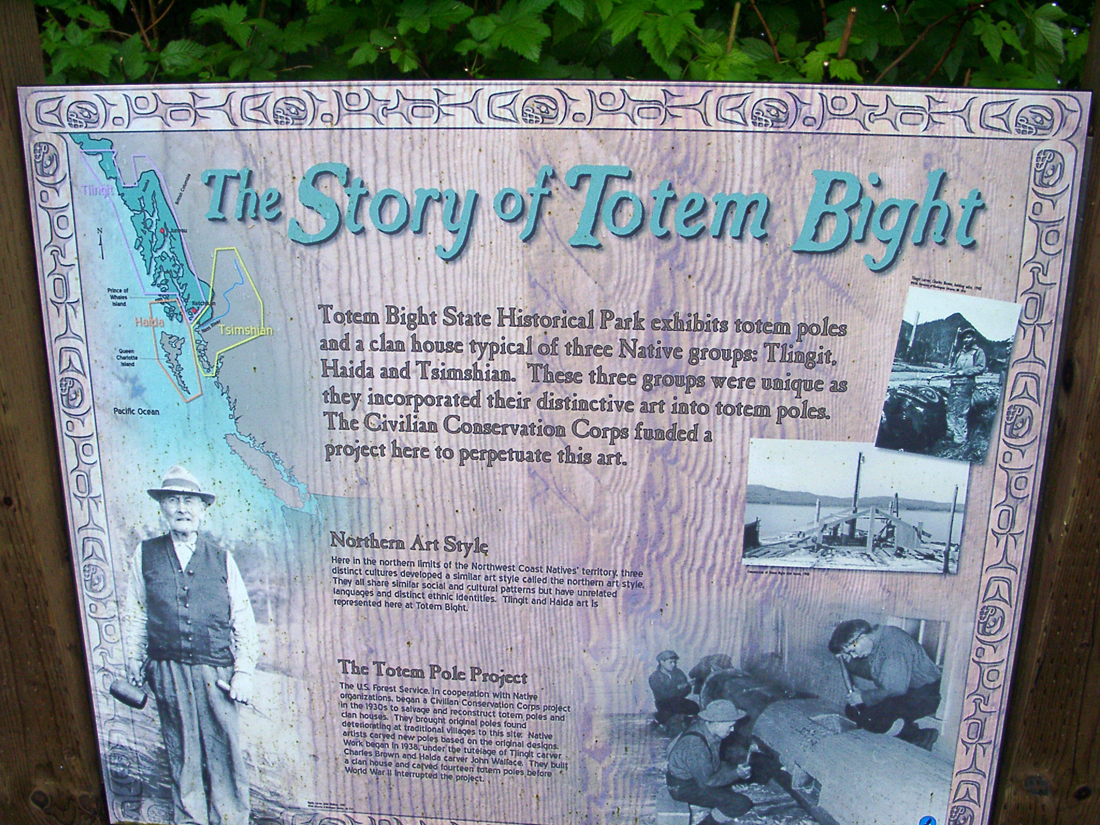 |
|
 |
|
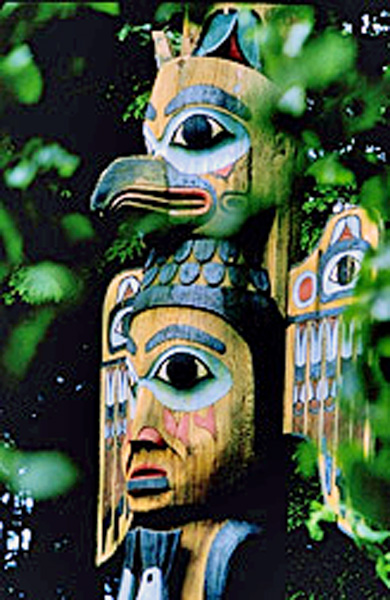 |
|
 |
 |
BELOW: The Mystical Thunderbird Totem Pole -
The intent of the carving is to illustrate the mythological conception
of thunder.
|
|
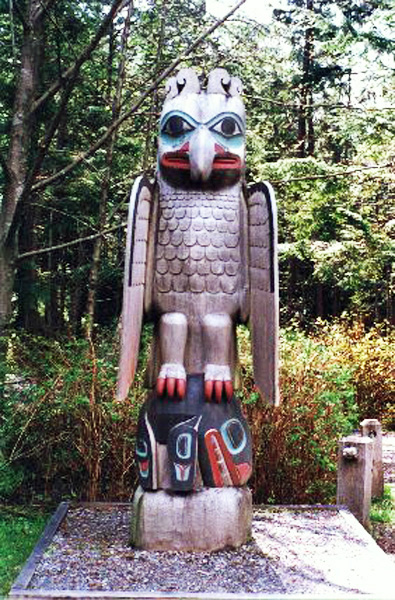 |
|
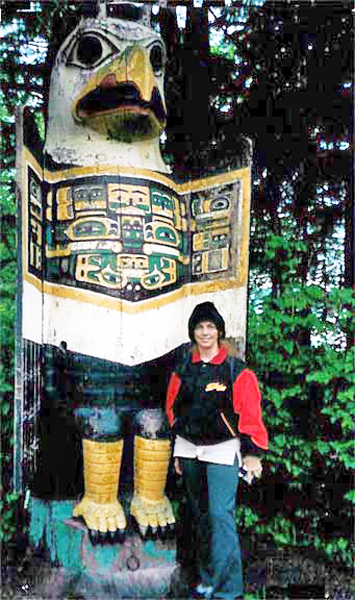 |
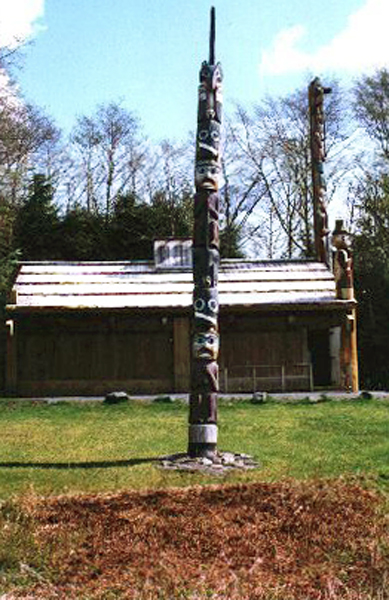 |
BELOW: Raven of the Head of
Nass: Copied from a Tlingit pole on Tongass Island, a chief
in a spruce root dance hat tops the pole. |
|
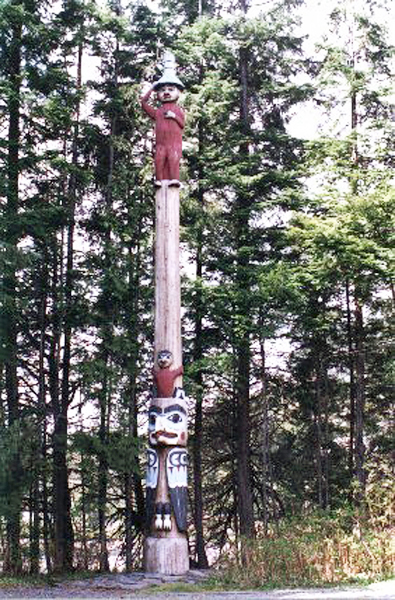 |
|
Below: Man wearing Bear Hat: This Tlingit grave marker was copied from Cat Island by Tlingit carver Charles Brown. In 1995, Israel Shotridge carved a second replica. It depicts a man of the Bear clan wearing a large carved wooden hat surrounded on the brim by painted whales. The hat was worn at a potlatch or an important occasion during which stories were told or dramatized. |
|
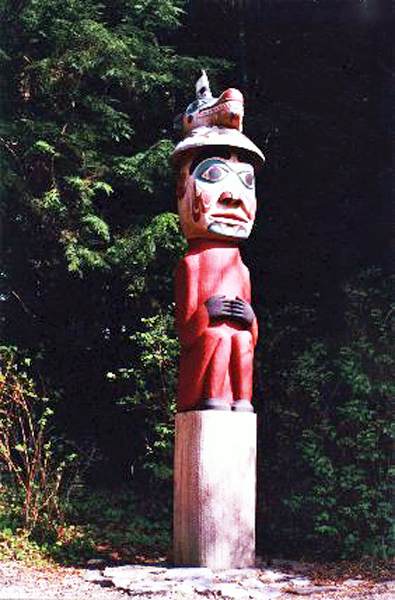 |
|
BELOW: Thunderer's Pole: The original of this totem was at Tongass Island and it symbolizes Thunder, belonging to the Thunder House people. Four brothers were changed into Thunderers. Like the Thunderbird, they create thunder and lightening and live high in the sky and on the mountain tops. |
|
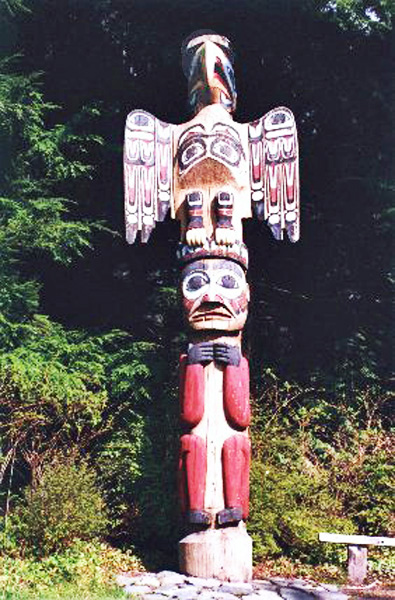 |
|
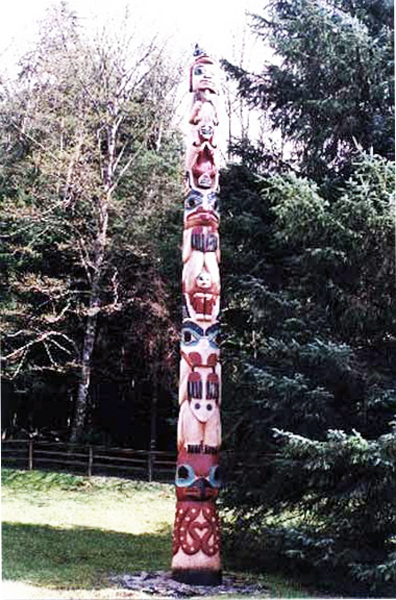 |
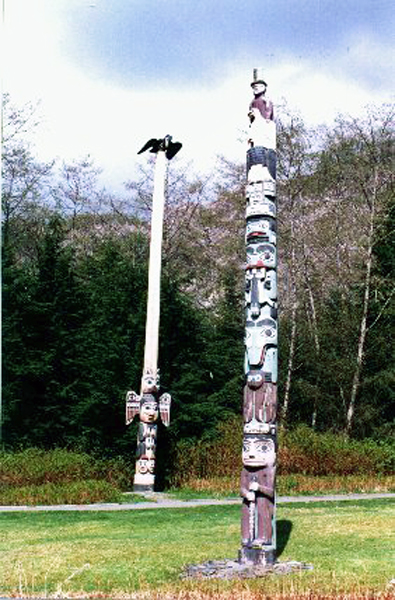 |
Below: Master Carver Pole: This pole was designed and carved by John Wallace. It was set up in 1941. The Eagle at the top of the pole is the main crest of the Haida Eagle Clan. Other Eagle clan symbols following the main crest are the Beaver and Bullhead. |
|
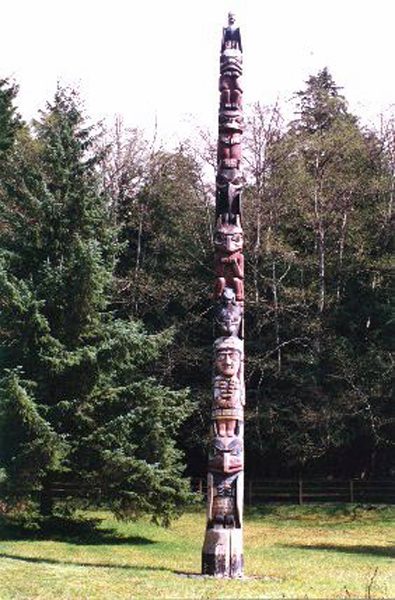 |
|
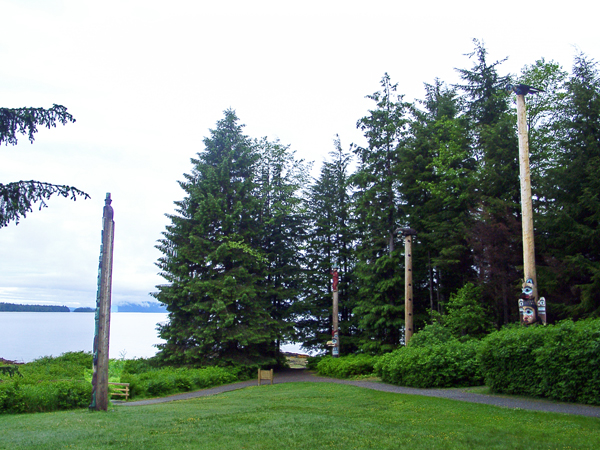 |
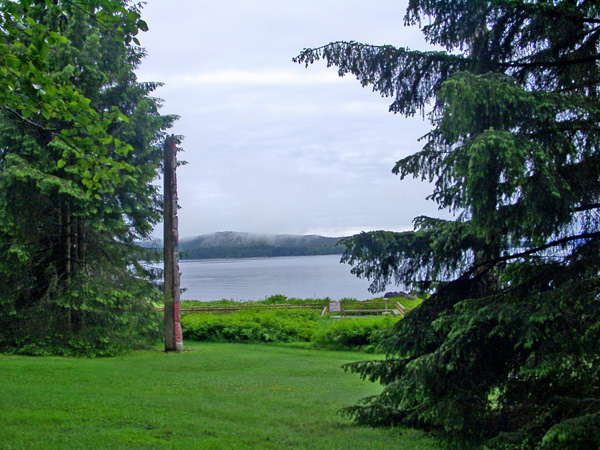 |
Below: a view of the water |
Below: skunk cabbage |
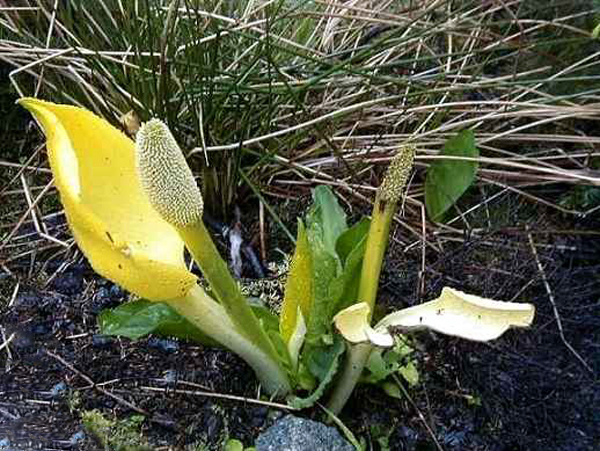 |
|
Below: Building of The Clanhouse started in 1939 and was completed in 1941. |
|
The Clan House is a replica of a community house representative of houses built in the early nineteen-century native villages of Southeast Alaska. It served as the chieftains dwelling and it also housed several families that were part of his clan. The structure and its totem art did not originally exist on the current site. The site was a fish camp prior to being turned into a totem park. The decorating of the facade was created by Charles Brown. It represents a stylized raven figure painted in light blue and brown colors. The eyes of the raven are composed as two stylized faces. Such elaborate decorations were rare for clan houses and typically suggest significant wealth. A central post divides the facade and marks the low entrance, while two additional posts mark the corners and flank the front of the structure. Sitting on the corner posts, a man figure wearing a spruce root hat and a crest design on his face, holds a cane and appears ready for a dance or potlatch. |
|
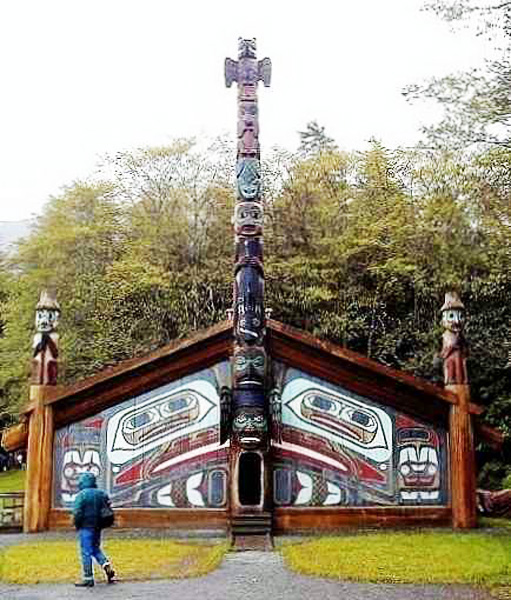 |
|
Below: The central room of the house can fit 50 people. It has a fireplace shared by all living in the dwelling. The families were of the same lineage as the chieftain, and were allotted separate parts of the dwelling. Belongings were stored under the removable floorboards. |
|
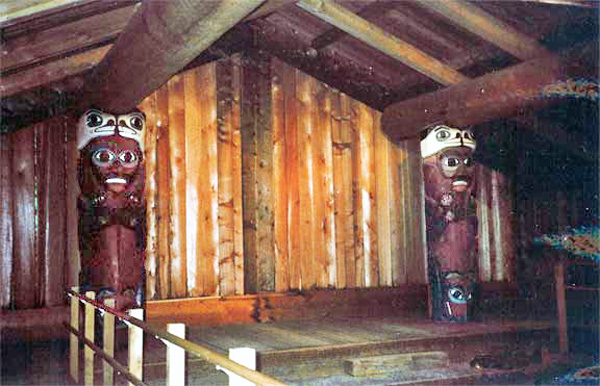 |
|
Below: The door is small and required everyone to stoop over. This conserves heat and also made it easy to kill enemies that might try to enter. |
|
Below: In many parts of Alaska, rain water is caught in barrels and purified for their drinking water. If they go without rain for a long period of time, they have to bring in drinking water in by ships, which is very expensive. |
|
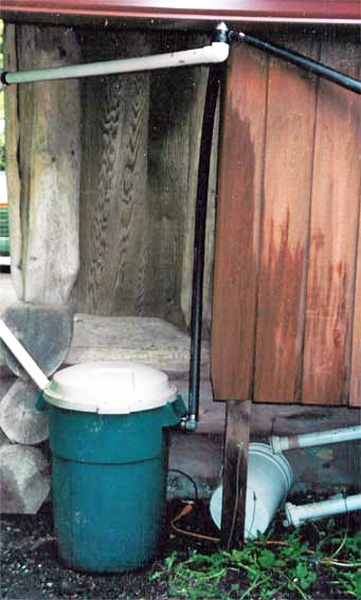 |
|
Below: Views outside of The Clanhouse |
|
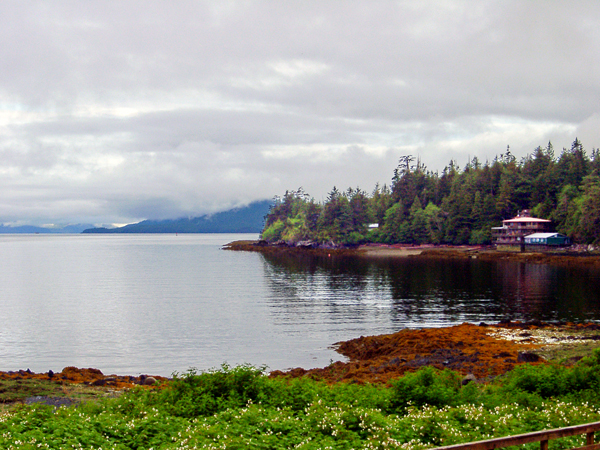 |
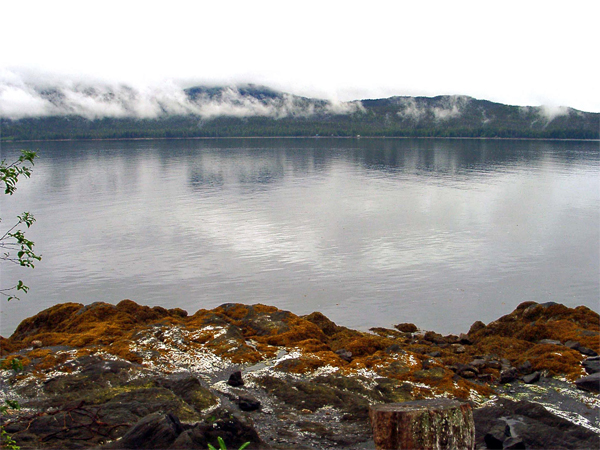 |
Below: Karen Duquette Inside Alaska Totem Trading gift store |
|
 |
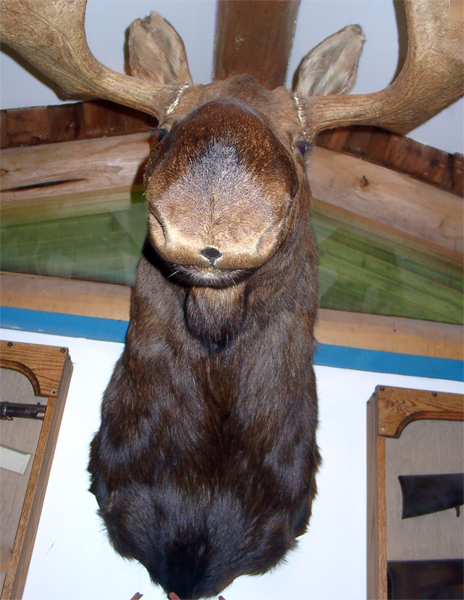 |
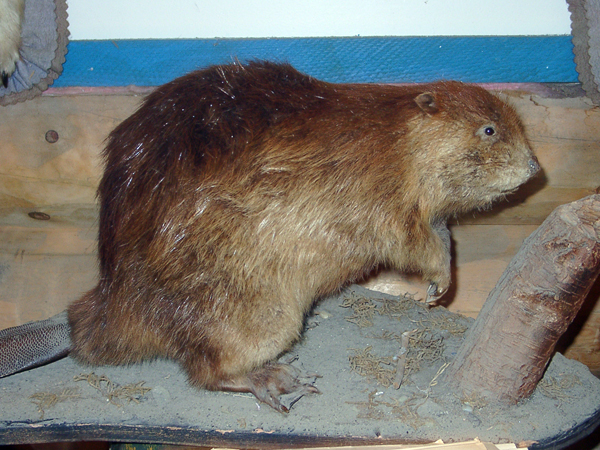 |
|
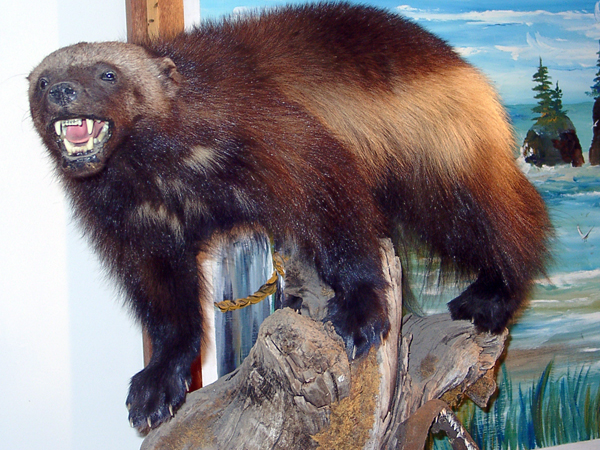 |
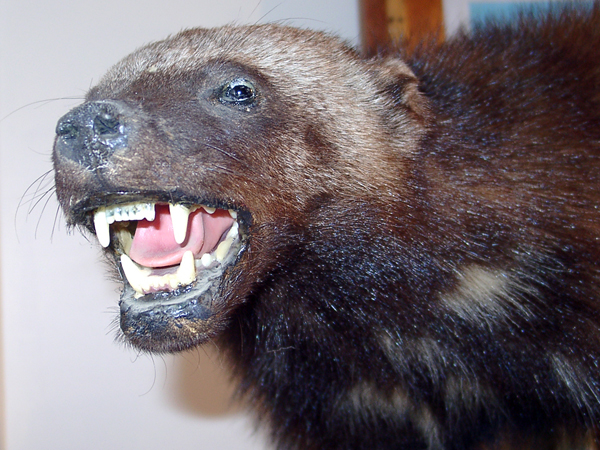 |
Below: Buses and a tourist ride |
|
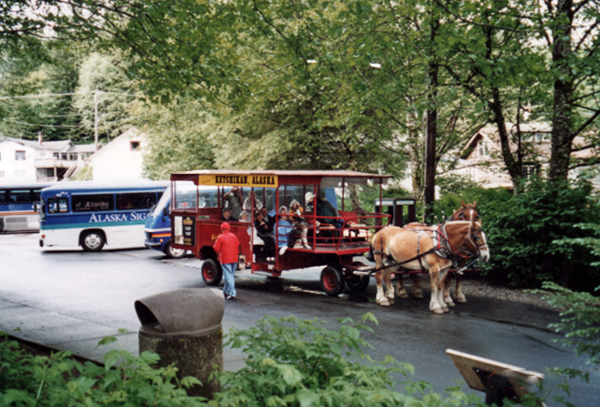 |
|
Below: Lining up to reboard the Norwegian Sun as two giant Bald Eagles welcomed the passengers. |
|
 |
|

